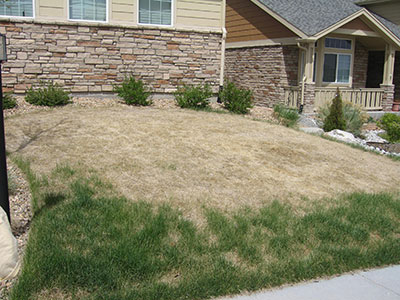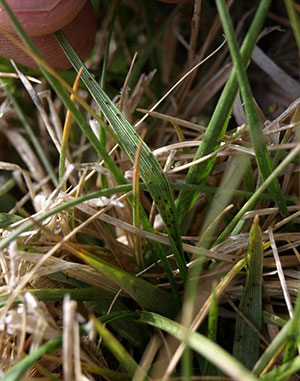
What can cause turf damage?
Turf damage caused by clover mites or Banks grass mites is common during February-May in Colorado, especially if precipitation is below normal and lawn gets no winter watering. Depending on the severity of the infestation, turf damage may range from minor thinning to complete kill.
What does mite-damaged turf look like?
Mite-damaged turf appears in irregularly-shaped straw-colored patches while the rest of the lawn turns green. Damage occurs most often on south- or west-facing exposures, especially if sloped, where turf is more likely to be drought-stressed.
What different types of mite damage are there?
Clover mite damage almost always occurs within 5-10 feet of a south- or west-facing building, fence, tree or other vertical structure. Banks grass mite damage often occurs in lawn areas not adjacent to structures. Mites of both species are extremely small and hide in the turf when disturbed, making them very difficult to see. The injured or dead turf often becomes apparent long after mites have ceased feeding in the lawn and it is too late to control them.
What works on healing turf?
 Some insecticides labeled for lawns with active ingredients bifenthrin or lambda-cyhalothrin (pyrethroid insecticides) may provide limited control of these cool-season mites. Winter and early spring watering of suspected or known mite “hotspots” is much more effective at preventing mite outbreaks and for reducing the severity of damage. Insecticide applications are much less effective – especially if not accompanied by irrigation.
Some insecticides labeled for lawns with active ingredients bifenthrin or lambda-cyhalothrin (pyrethroid insecticides) may provide limited control of these cool-season mites. Winter and early spring watering of suspected or known mite “hotspots” is much more effective at preventing mite outbreaks and for reducing the severity of damage. Insecticide applications are much less effective – especially if not accompanied by irrigation.
What if I cannot mend turf damage?
If infested turf areas don’t recover in late spring and is patchy and thin, the damaged areas are candidates for lawn renovation. Refer to Fact Sheets 5.505 (Clover and other Mites of Turfgrass) and 7.241 (Renovating the Home Lawn) for additional information.



